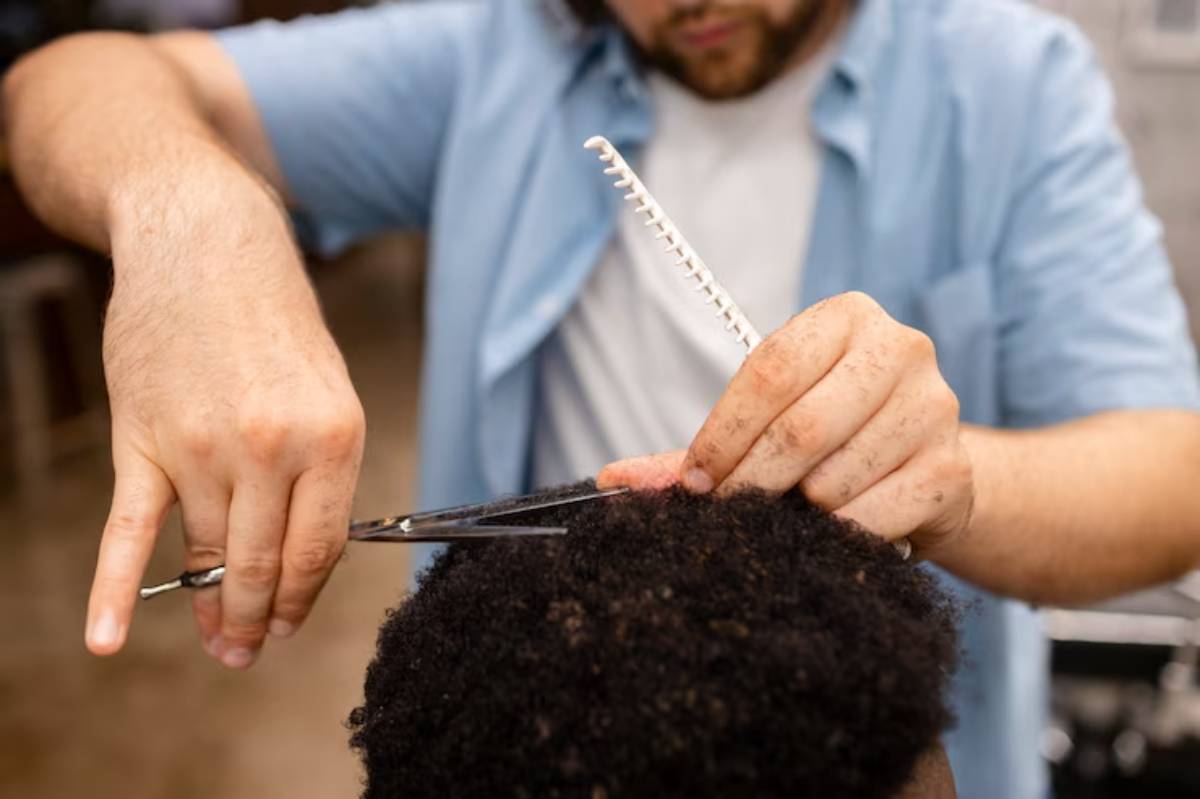
Does Cutting Curly Hair Really Make It Grow?
“If you want your curls to grow, just cut them.”
It’s a statement that’s been echoed in salons, family living rooms, and haircare forums for decades. For many with curly hair, the idea that trimming your curls will somehow make them grow faster sounds both promising and perplexing.
But let’s be honest — while we may hope it’s true, most of us have questioned whether this advice actually holds water.
In this article, we’ll dig into the biology of hair growth, explore what trimming does (and doesn’t) do for your curls, and explain why regular cuts are still a vital part of your haircare routine. By the end, you’ll have a clear, science-backed answer to one of curly hair’s most persistent myths.
Understanding Hair Growth: What Happens Beneath the Surface

Growth Starts at the Root, Not the Ends
Hair growth happens at the scalp, specifically in the hair follicle. This follicle goes through a cycle of:
- Anagen (growth phase)
- Catagen (transition phase)
- Telogen (resting phase)
Your ends have nothing to do with how quickly new hair grows, as they’re made of dead protein (keratin) and cannot influence the follicle.
In simple terms? Cutting your curls doesn’t affect the speed of growth — because it’s happening far above the scissors’ reach.
So Why Does It Feel Like Hair Grows Faster After a Trim?
It’s About Perception — and Health
Many people report that their hair seems to grow faster after a cut. But this is often due to:
- Eliminating split ends
- Improved curl definition
- Easier detangling and less breakage
When your ends are healthy, your hair retains length more effectively. In other words, trimming doesn’t increase growth — it prevents you from losing length due to breakage and damage.
The Truth About Split Ends and Curl Health
What Happens If You Don’t Trim?
Split ends don’t just sit quietly. If left untreated, they travel up the hair shaft, weakening the strand and causing knots, frizz, and even tangling that leads to breakage during detangling.
For curly hair, which is already more fragile due to its structure, skipping trims means you’ll likely lose more length than you retain.
A healthy trim schedule helps:
- Keep curl shape defined
- Improve manageability
- Reduce fairy knots and tangling
- Promote stronger ends
How Often Should You Trim Curly Hair?
Customise Based on Curl Type and Routine
There’s no one-size-fits-all rule. But as a general guide:
- Every 8–12 weeks for those who wear their hair out frequently
- Every 12–16 weeks for protective styling or lower manipulation
- As needed if you notice more knots, split ends, or frayed curls
If you’re caring for your curls diligently — moisturising, protecting at night, using gentle detangling methods — you may not need to trim as often.
Curious about trimming routines for little ones? Check out our post on managing tangles and knots in young curls to keep their hair healthy and happy.
Why This Myth Persists in the Curly Community
A Combination of Misunderstanding and Hope
The curly hair journey often involves a lot of trial and error, and with curls naturally shrinking in length, many people feel their hair isn’t growing even when it is.
This leads to:
- Over-reliance on anecdotal advice
- Pressure to cut based on outdated salon norms
- Frustration with shrinkage masking progress
It’s important to separate visible length from actual growth, and recognise that growth doesn’t always look the same for every texture.
Trimming for Shape: A Curl-Specific Strategy

More Than Just Health — It’s About Style
Trimming curly hair isn’t only about preventing damage — it’s also about enhancing your overall shape. A good cut can:
- Remove bulk from certain areas
- Bring out your natural curl pattern
- Balance layers for volume or definition
If your curls feel weighed down, shapeless, or uneven, a thoughtful trim from a curl-specialist stylist can completely transform your look.
New to curl care? Explore the beginner’s guide to caring for curly hair for tips on how to build a regimen that keeps your shape and strength intact.
Debunking More Trimming Misconceptions
Myth: “Cutting more off will help it grow faster.”
Reality: Cutting more length won’t increase growth speed, and taking too much can hinder length retention, especially if it wasn’t needed.
Myth: “If I’m growing my hair, I should avoid trims altogether.”
Reality: Skipping trims might help you retain some length in the short term, but you’ll likely lose more to breakage later, and end up needing a bigger cut.
Myth: “Dusting isn’t enough.”
Reality: “Dusting” (trimming tiny amounts regularly) can work well if your ends are mostly healthy. It helps you maintain shape and length with minimal loss.
Signs You’re Overdue for a Trim
- Your ends feel rough or thin
- You notice more tangles or single-strand knots
- Your styles lose definition faster
- You hear a “snap” sound when detangling
- Your curls aren’t springing back like they used to
If any of these feel familiar, it’s time for a snip — and your curls will thank you for it.
Tips for Trimming Curls at Home
If you’re confident and want to trim your curls yourself, remember:
- Trim on dry, styled hair to see your true shape
- Use sharp, professional scissors
- Only take off small amounts at a time
- Work in sections
- Follow the natural fall of your curls — don’t pull or stretch
When in doubt, book a curl specialist stylist. They’ll understand your texture and help preserve shape and health.
Conclusion: Trimming Isn’t Magic — It’s Maintenance
Cutting your curly hair won’t magically speed up growth, but it will help you maintain length, improve health, and keep your curls looking their best. The key is to shift the mindset from “cutting to grow” to “cutting to retain.”
Regular trims, combined with a thoughtful routine, protective styling, and good nutrition, are the true keys to achieving the long, strong curls you’re aiming for.
So don’t fear the scissors — use them wisely, and your curls will flourish.


